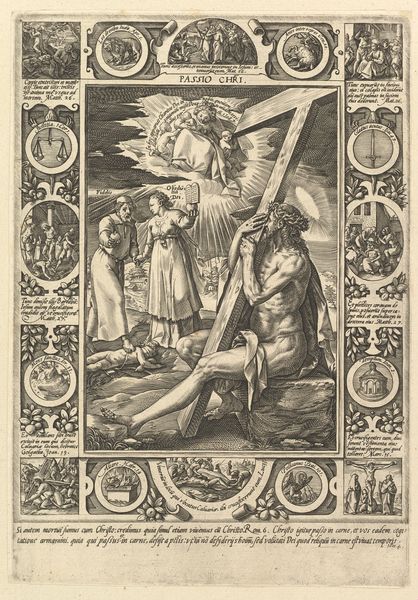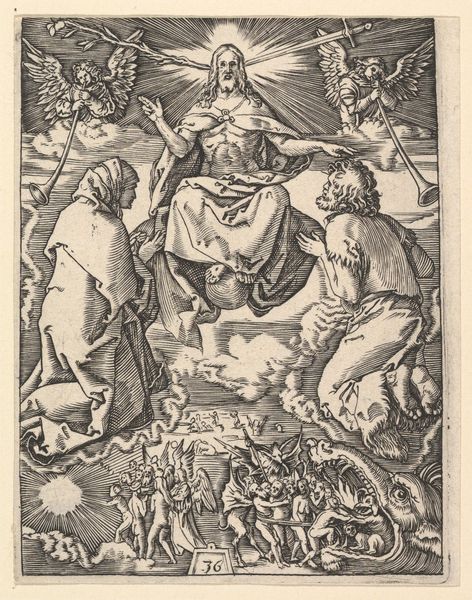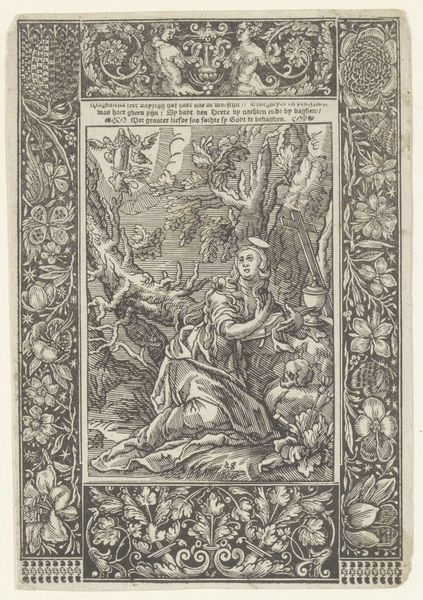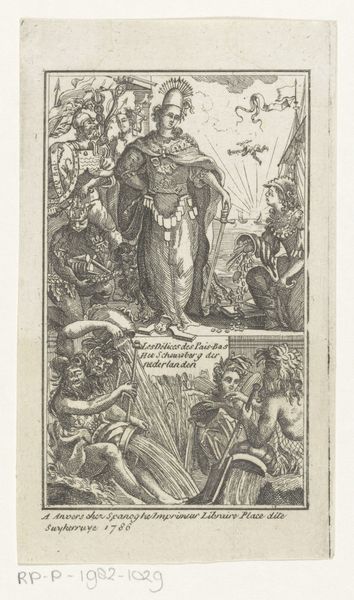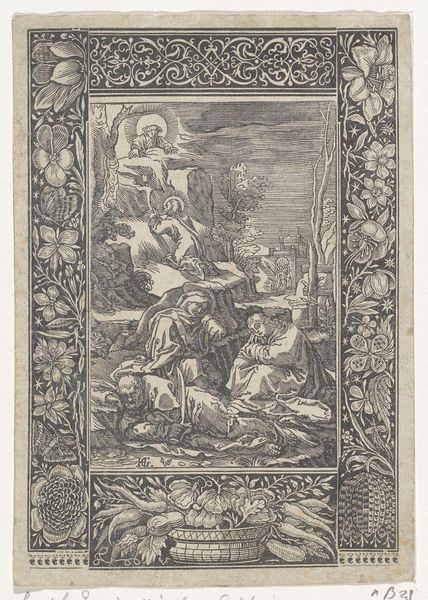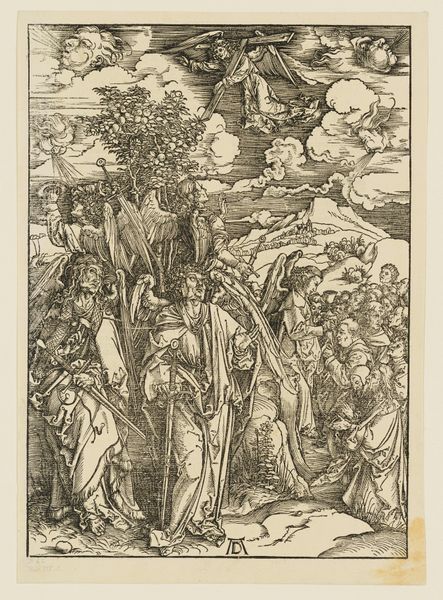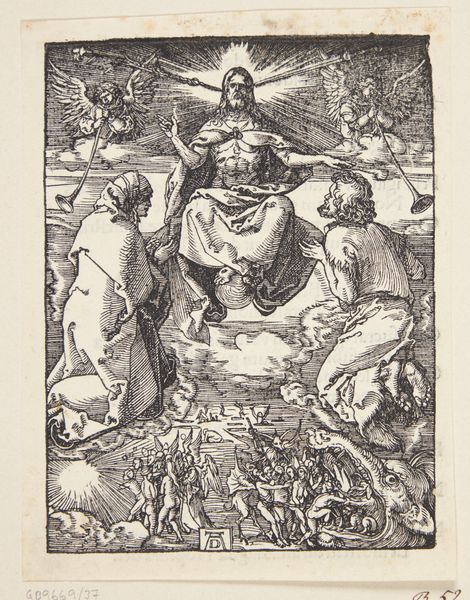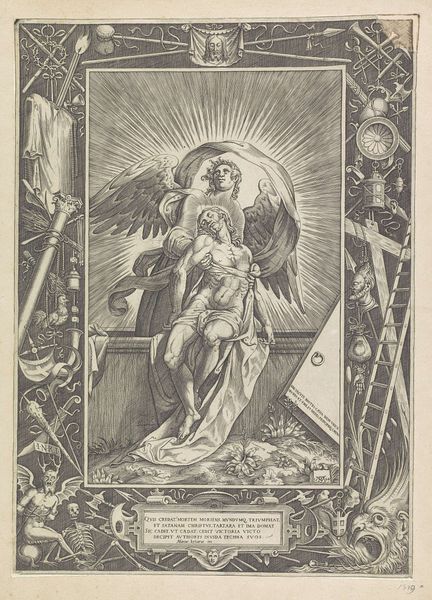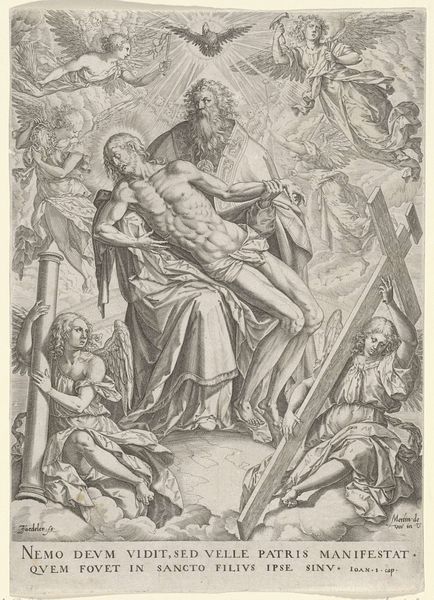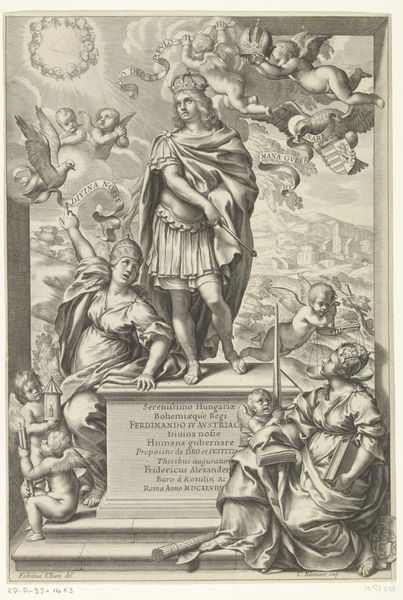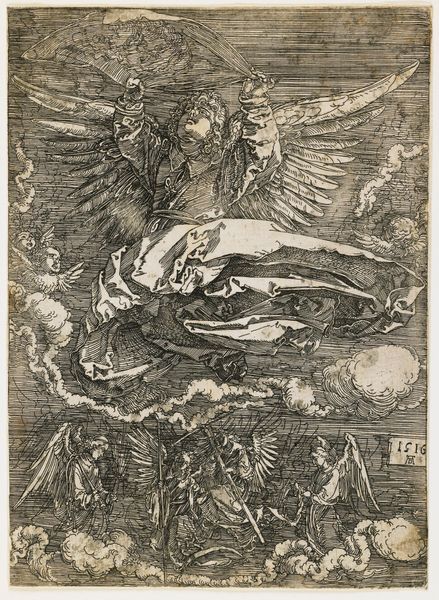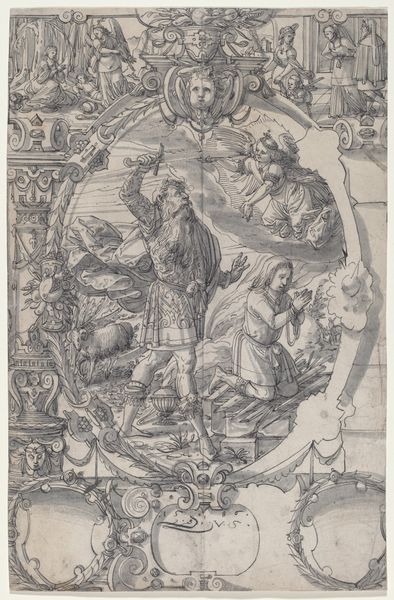
print, intaglio, engraving
#
pen drawing
# print
#
intaglio
#
old engraving style
#
figuration
#
form
#
11_renaissance
#
pen-ink sketch
#
line
#
pen work
#
history-painting
#
northern-renaissance
#
engraving
Dimensions: height 264 mm, width 185 mm
Copyright: Rijks Museum: Open Domain
Editor: Here we have Hendrick Goltzius's "Resurrection of Christ," created in 1578. It's an engraving, full of incredibly fine lines. I’m immediately struck by how triumphant, almost violent, the image is, with Christ trampling these grotesque figures at the bottom. How do you interpret this work? Curator: I see layers of symbolic language at play. Note how Christ, framed within an oval—a visual halo—holds the banner of victory. But observe: He’s not merely ascending; he’s actively subduing chaotic figures representing sin and death, mirroring an archetypal hero's journey found across cultures. Do you notice the intricate border around the central scene? Editor: Yes, there are all these small scenes and symbols in the margins… what do they represent? Curator: These surrounding vignettes act as visual annotations, drawing from scriptural narratives and allegorical emblems popular during the Reformation. The ladder, the chalice... they each contribute to a rich symbolic tapestry intended to reinforce the spiritual message of redemption and Christ’s triumph over earthly and infernal forces. The intent is not merely illustrative; it’s deeply persuasive, speaking to the anxieties and aspirations of the viewer in the late 16th century. Editor: So, the artist is using recognizable symbols to connect with the audience on an emotional and intellectual level? Curator: Precisely. It's cultural memory rendered visual. Editor: I’ve learned to see past the literal representation and start to decode these symbols. Thank you! Curator: My pleasure. Paying attention to those repeating images can unlock a deeper understanding of an artwork and its era.
Comments
No comments
Be the first to comment and join the conversation on the ultimate creative platform.
